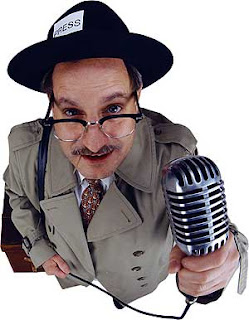To help mark the bicentennial of the Archdiocese of New York — or, more accurately, the Diocese — a museum in Gotham is about to open an exhibit that tells the fascinating, sometimes surprising history of Catholics in America’s largest city.
From the New York Sun:
“Catholics in New York, 1808-1946” — organized in light of the Archdiocese of New York’s bicentennial celebration — makes its debut on May 16. The exhibit is organized around three key themes: the centrality of parish life, the evolution of church-run schools, hospitals, and social welfare organizations, and the rise of Catholics as a major force in city politics.
The beginning date of the exhibition, 1808, was when New York had enough Catholics to be named a diocese. A diocese gets a bishop; a bishopric gets a cathedral. The New York diocese began building its first cathedral in 1809, at Mott and Prince streets. It opened in 1815. The French-born architect Joseph François Mangin, whose earlier credits included the Louis XV-style City Hall, startlingly chose a Gothic style for the cathedral at a time when the Gothic Revival had mostly to do with eccentric private houses and garden follies, and had not yet become the titanic force in church design that it would be 20 years later. (Mangin’s design was compromised following an 1860s fire and rebuilding of the cathedral.)
New York Catholics achieved diocesan mass in 1808, but they’d been around for a while. The first Catholic priest in the New Netherland colony was the French missionary Isaac Jogues, later killed by upstate Iroquois. In 1664, the colony passed to the Catholic James, Duke of York. He named Thomas Dongan, a Catholic, as Colonial governor. The “Dongan Charter,” establishing religious freedom in the colony, foreshadows the Constitution and Bill of Rights. Alas for James: England’s Glorious Revolution deposed him in 1688. The new monarchs were the Protestants William and Mary. Between 1688 and 1783, New York colony forbade the practice of the Catholic faith.
Even with independence, there were those who believed Catholics should have to renounce their faith to become citizens — the old “dual allegiance” (to America and to Rome) thing. Nonetheless, the Bill of Rights enshrined religious freedom, and New York’s first Catholic parish — St. Peter’s, formed in 1783 — built its first church in 1786. The present St. Peter’s, on Barclay and Church streets, is the congregation’s second home, completed in 1840. The community life of Catholic parishes, beginning with St. Peter’s, will be a major theme of the exhibition.
Irish immigration swelled New York’s Catholic population. Great numbers of Irish came to New York well prior to the famine migrations of the 1840s and 1850s, and labored on great public-works projects, such as the Erie Canal and the Croton water system. That these Irish often undercut native-born workingmen in the labor market, and besides which practiced a strange, inscrutable religion, led to gang violence such as that portrayed in Martin Scorsese’s 2002 film “Gangs of New York.” The forthcoming exhibit will look at how this “community of immigrants” faced down prevalent anti-Catholic sentiment. Indeed, the most visually arresting part of Mangin’s old St. Patrick’s Cathedral is the high, sinuously buckling brick wall surrounding the property. The wall served a defensive purpose, as nativist gangs often vandalized Catholic churches.
I can’t wait to see it. You can get a more complete picture at the link.
Image: Old St. Patrick’s, New York City

